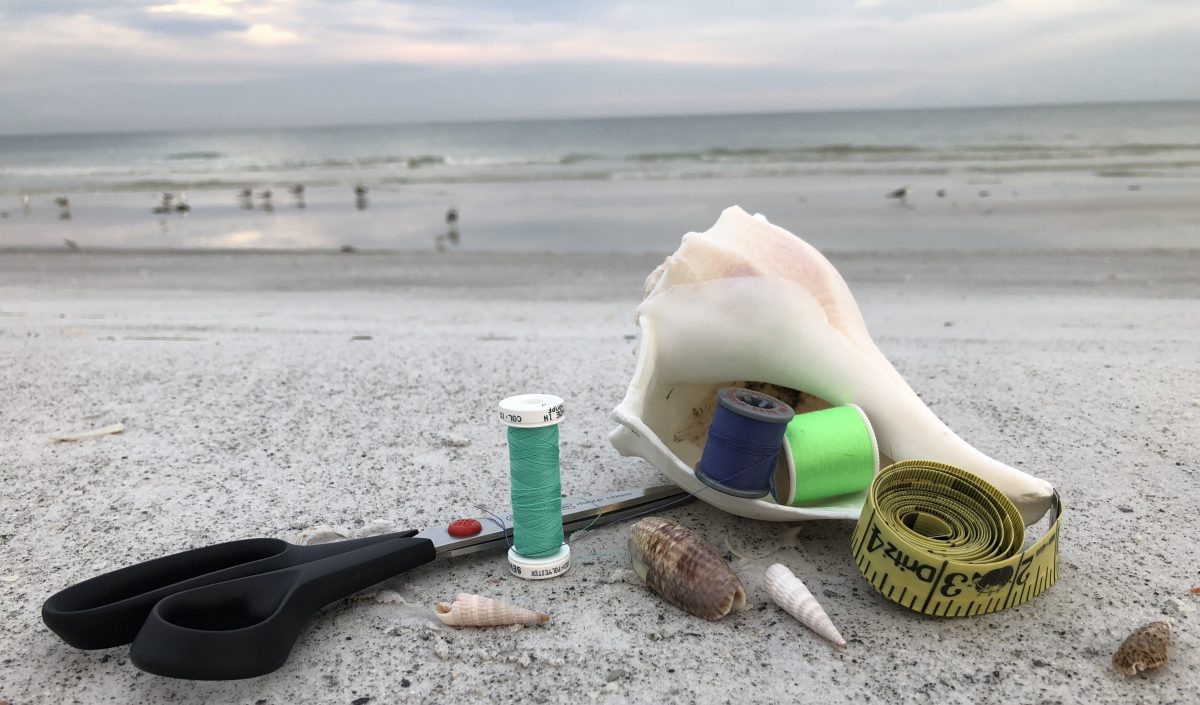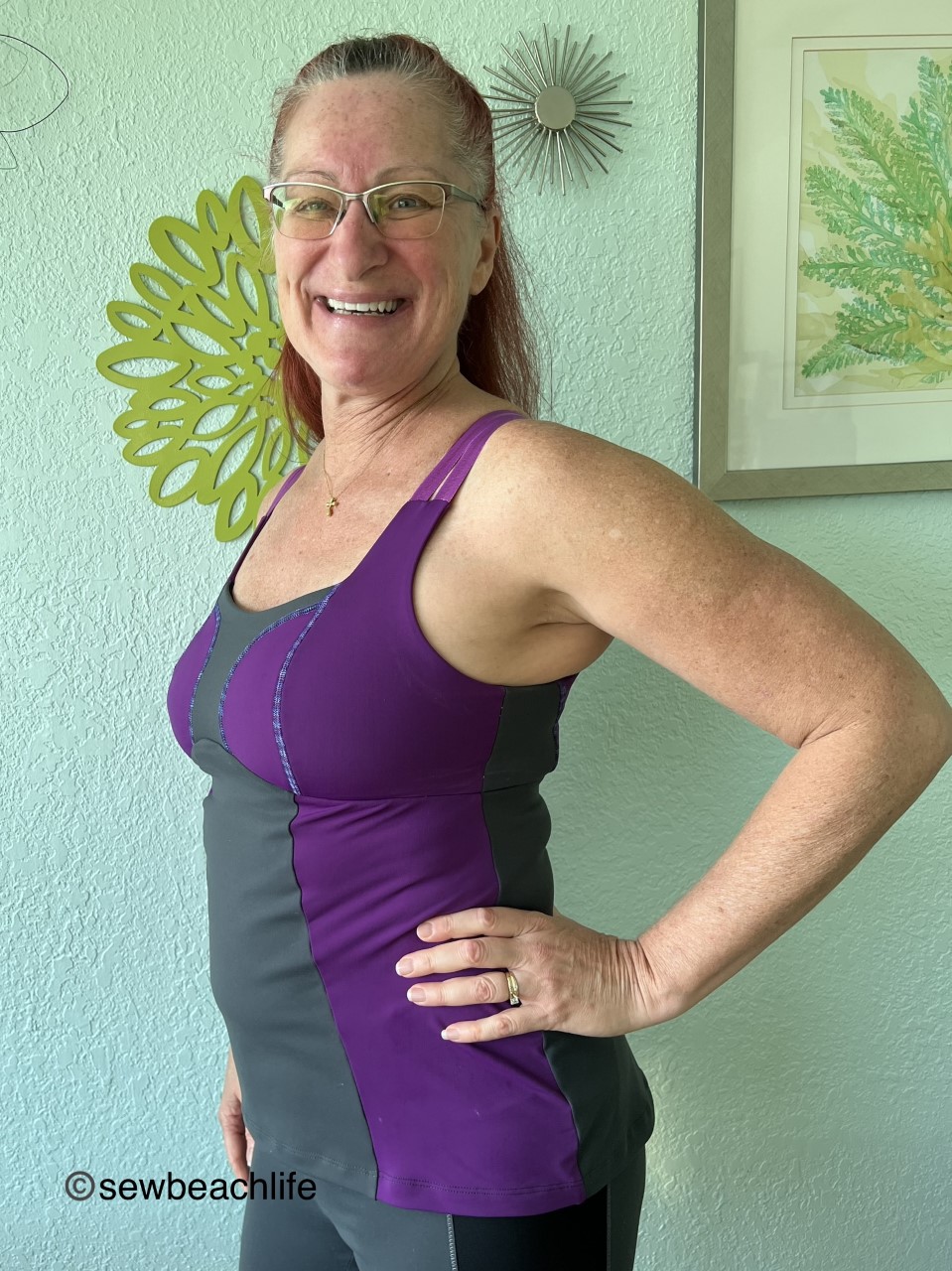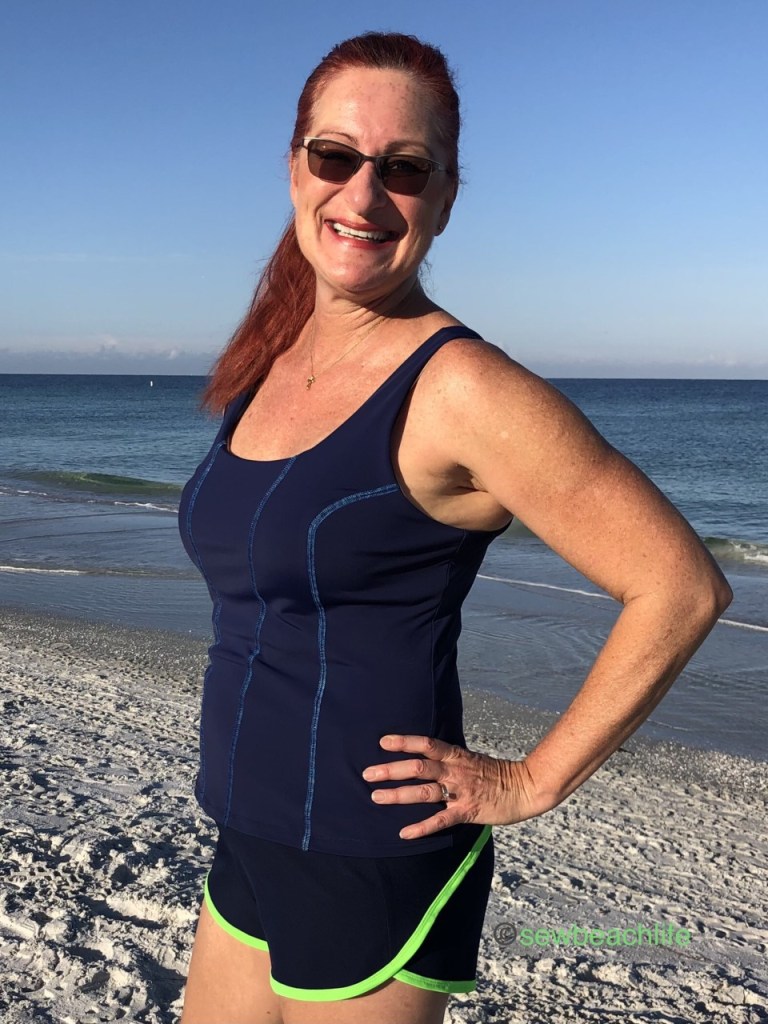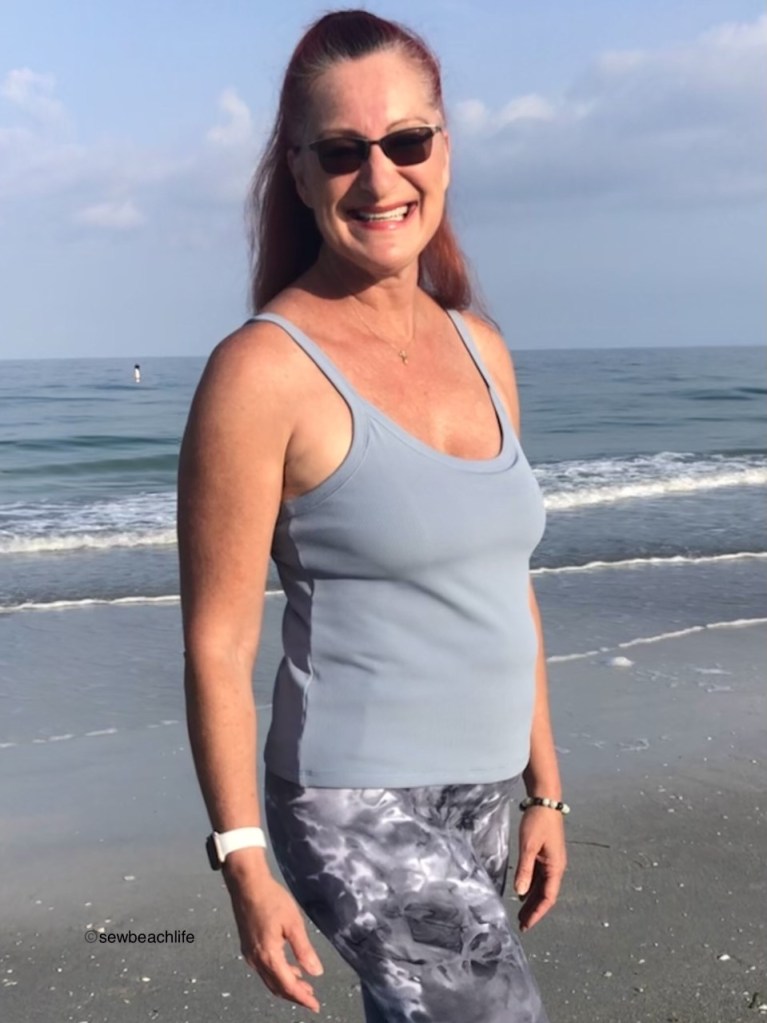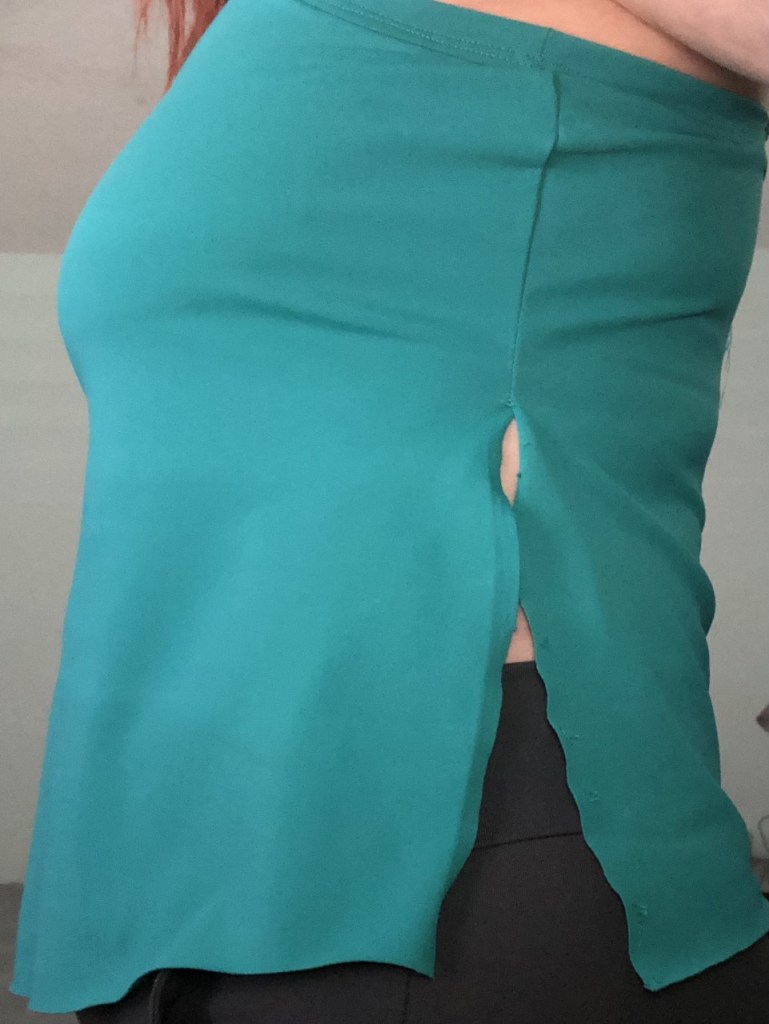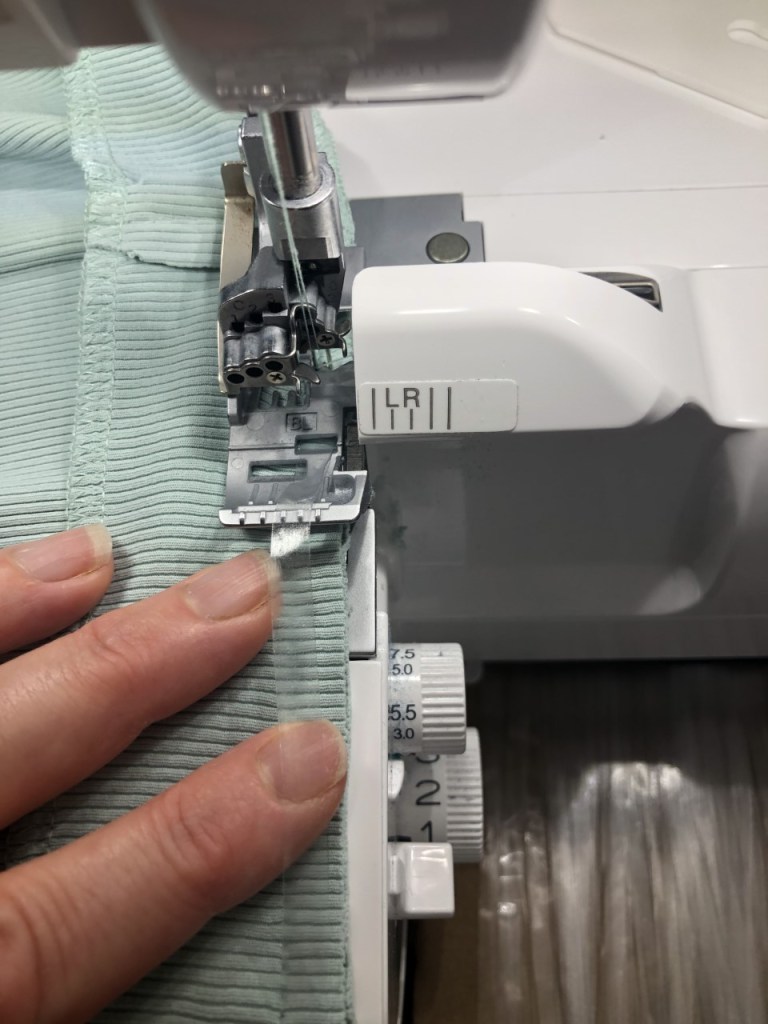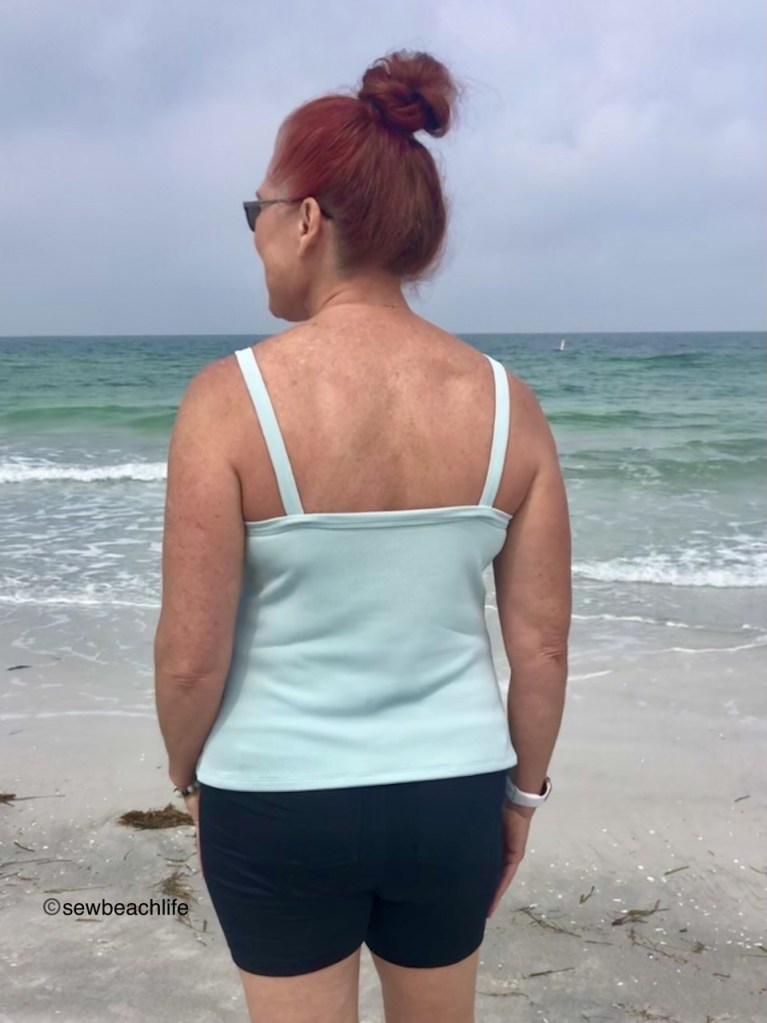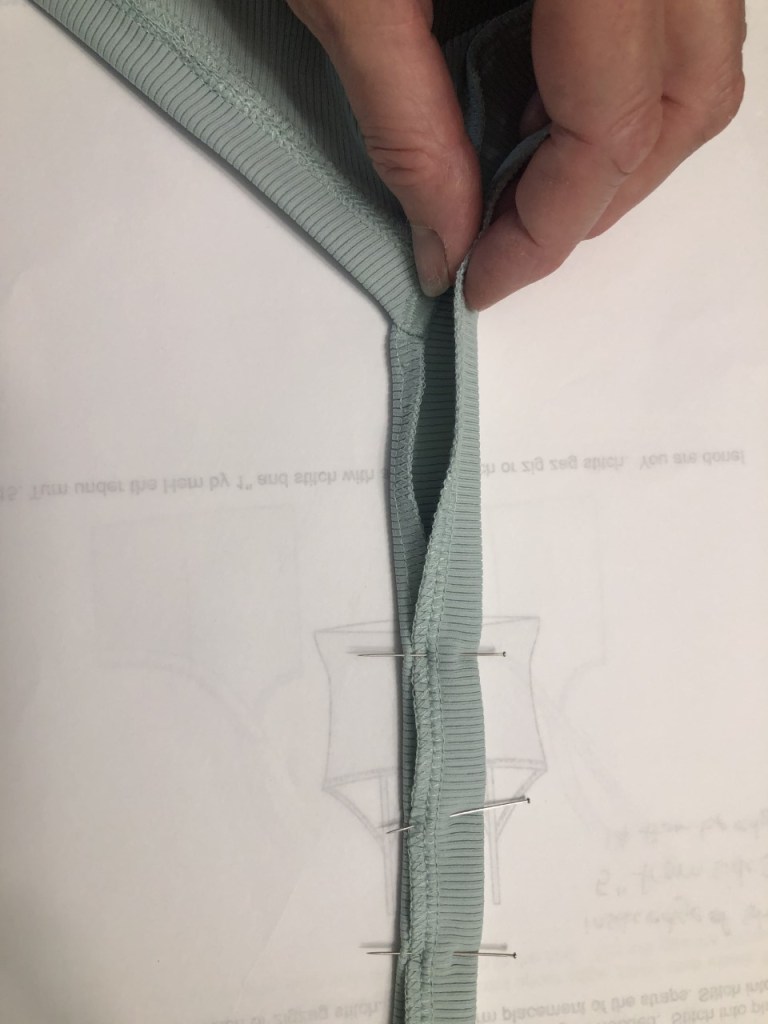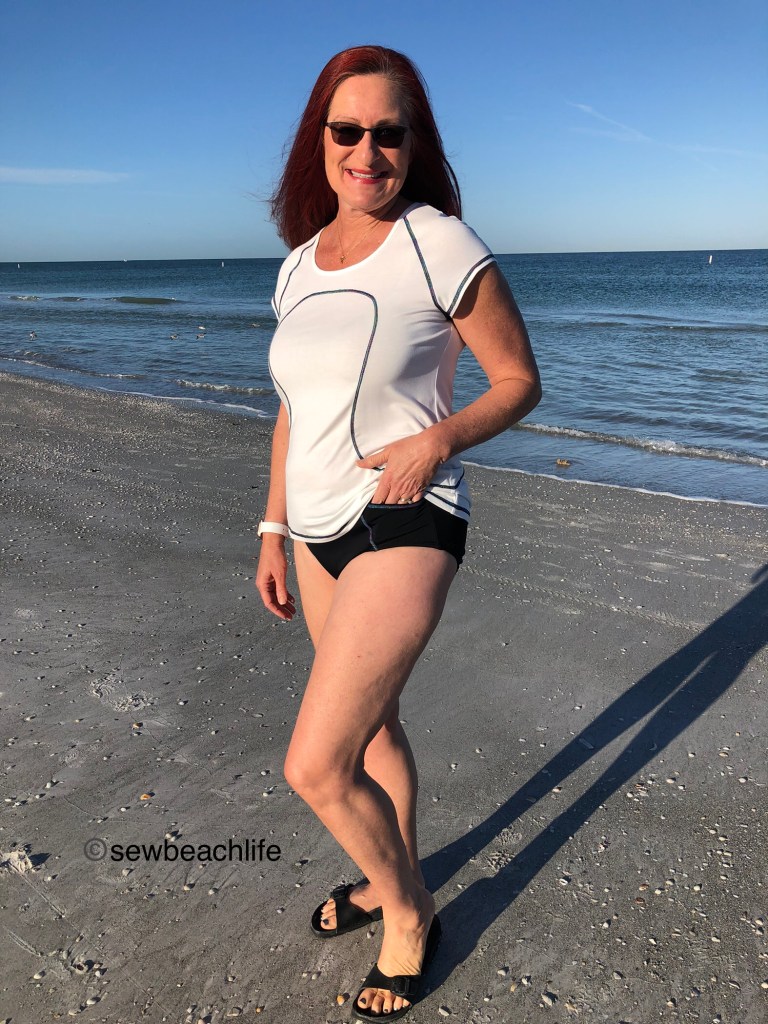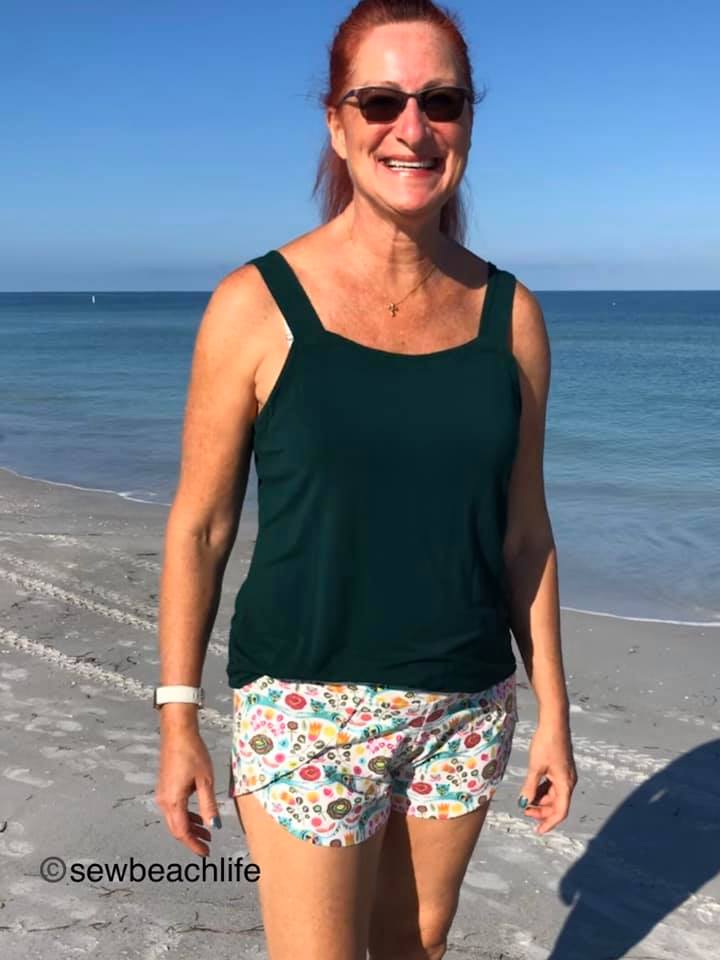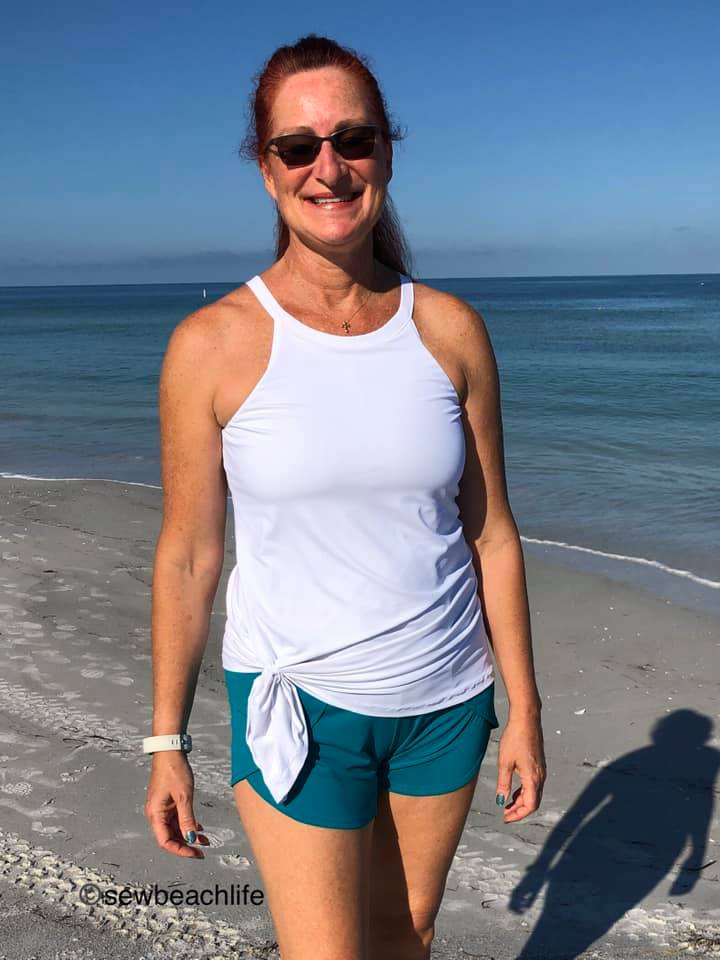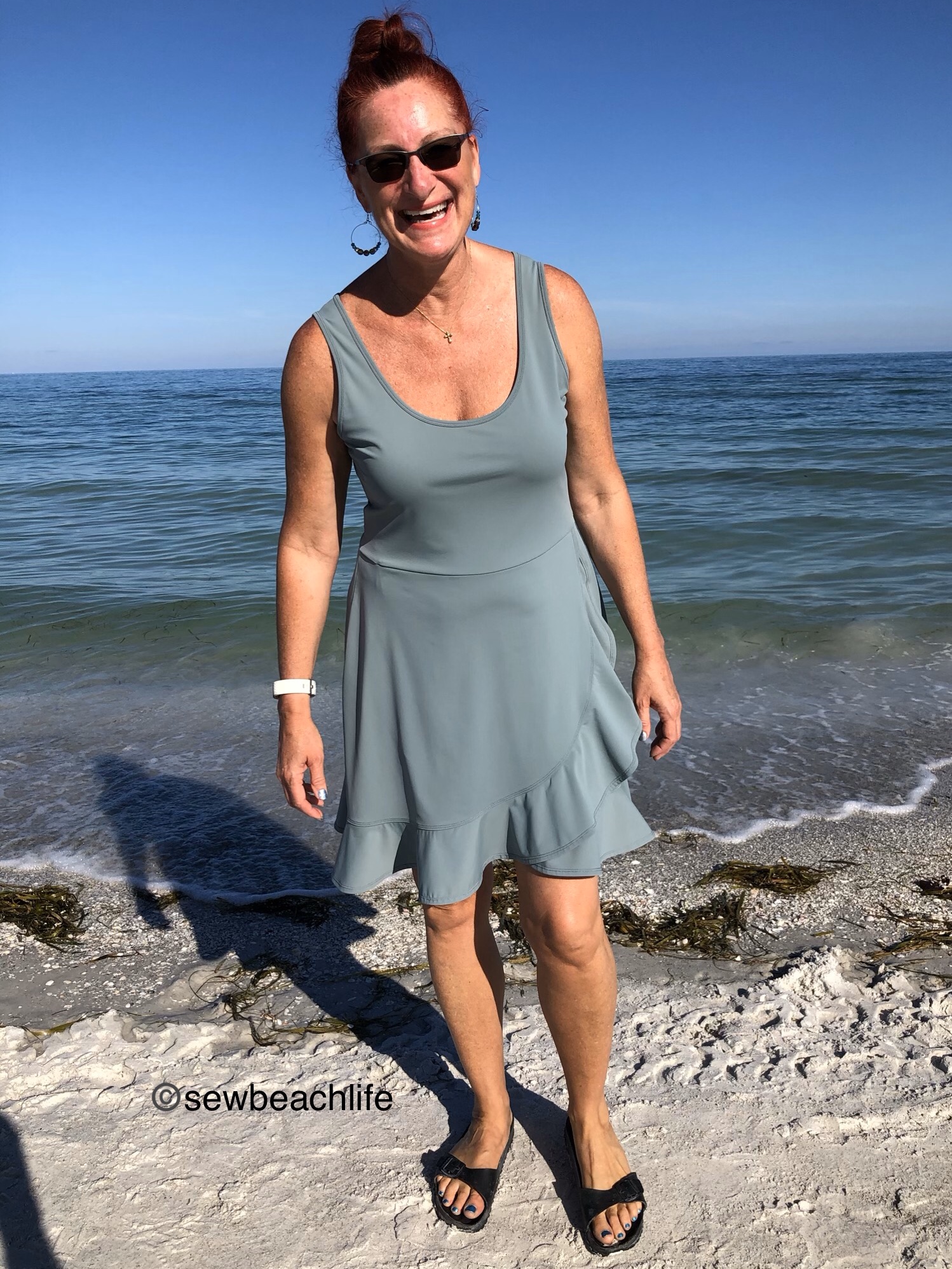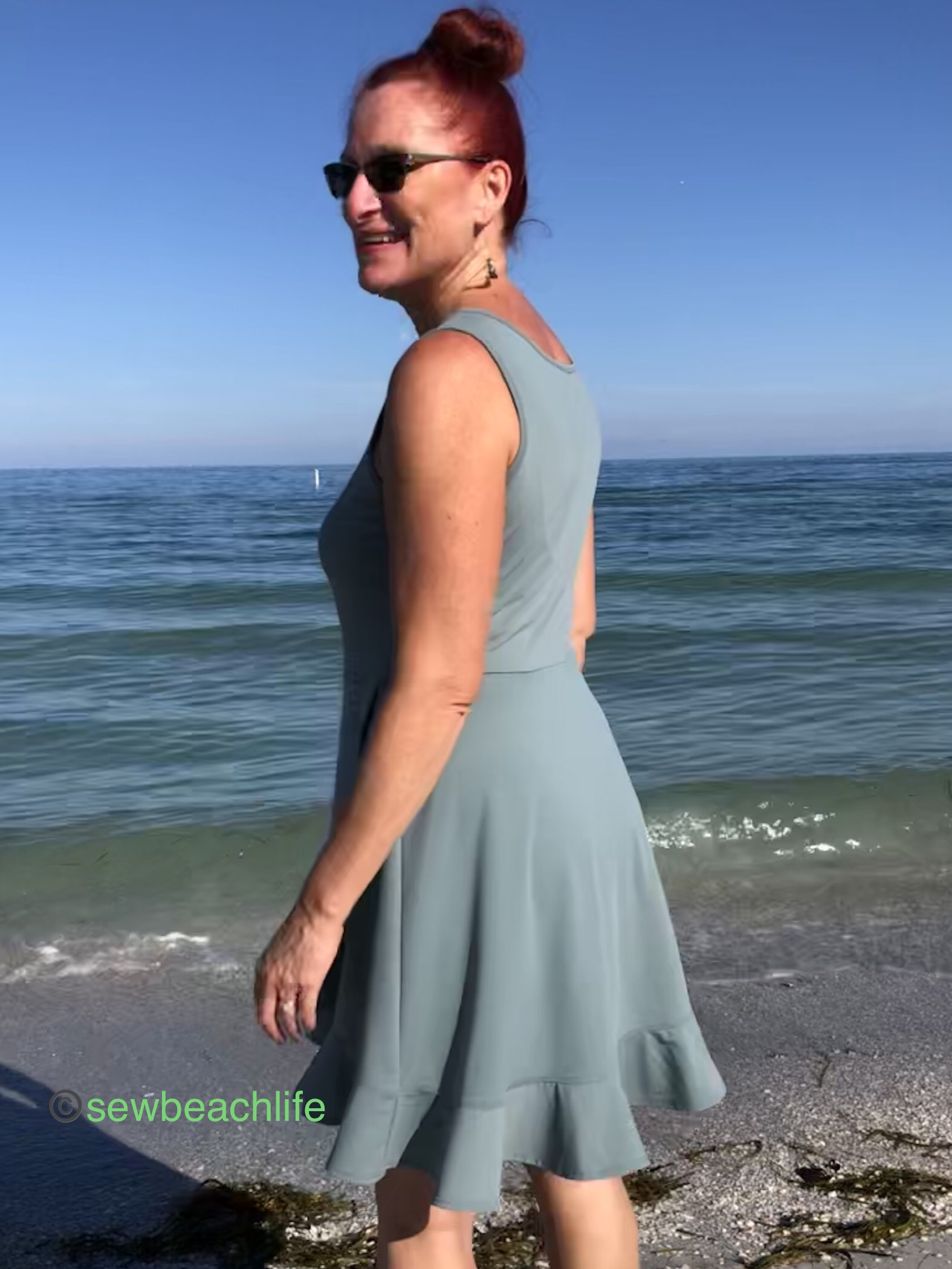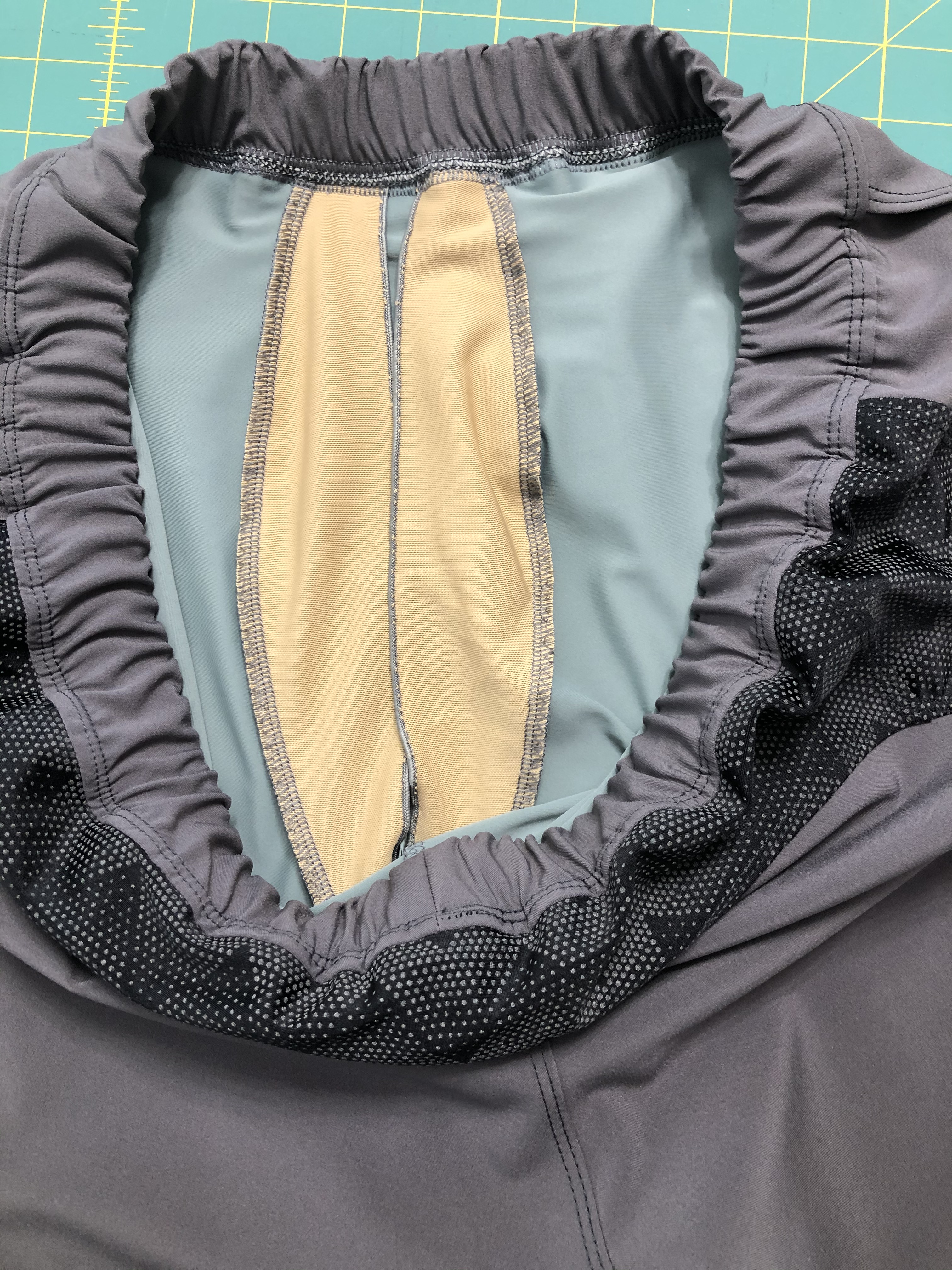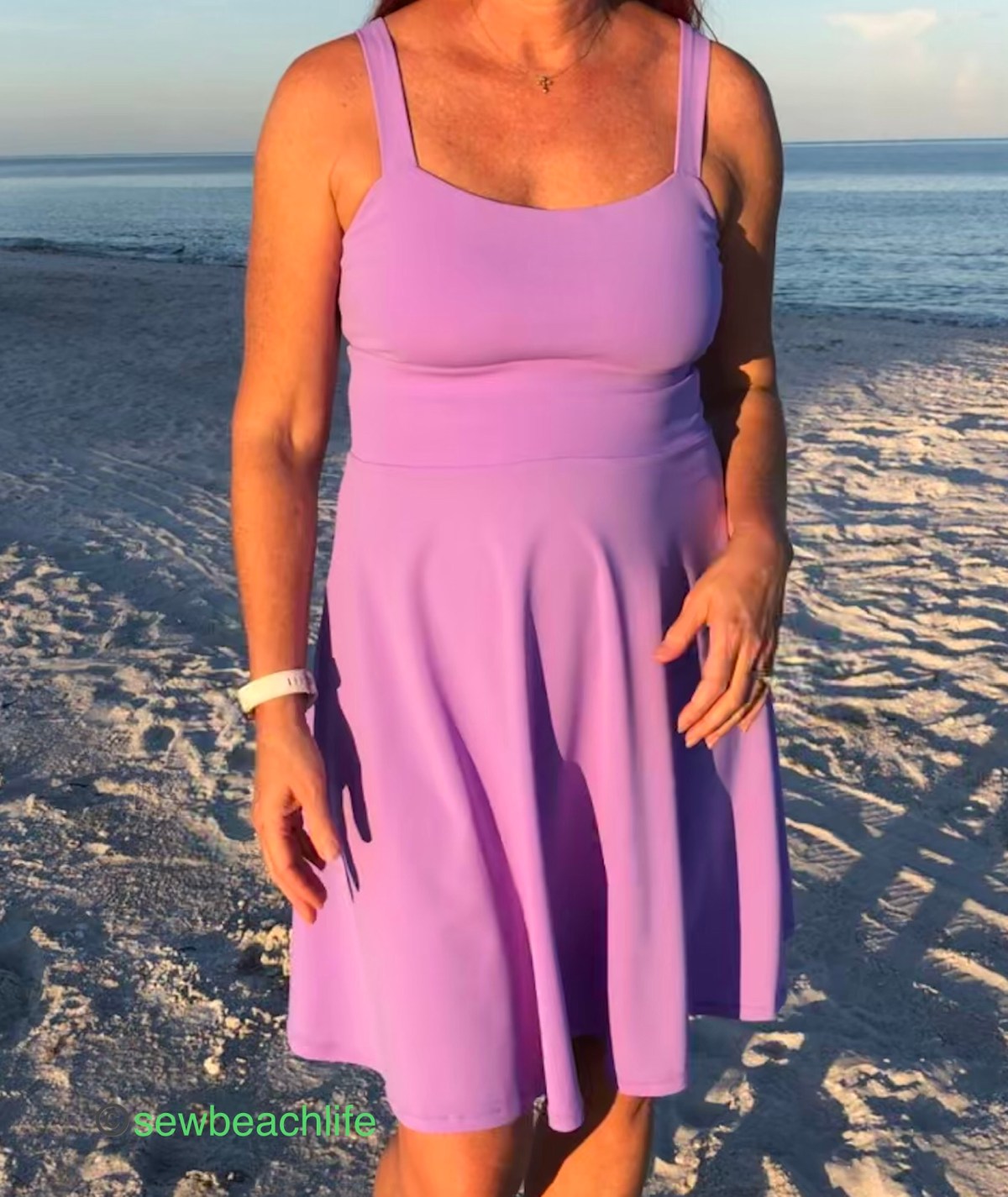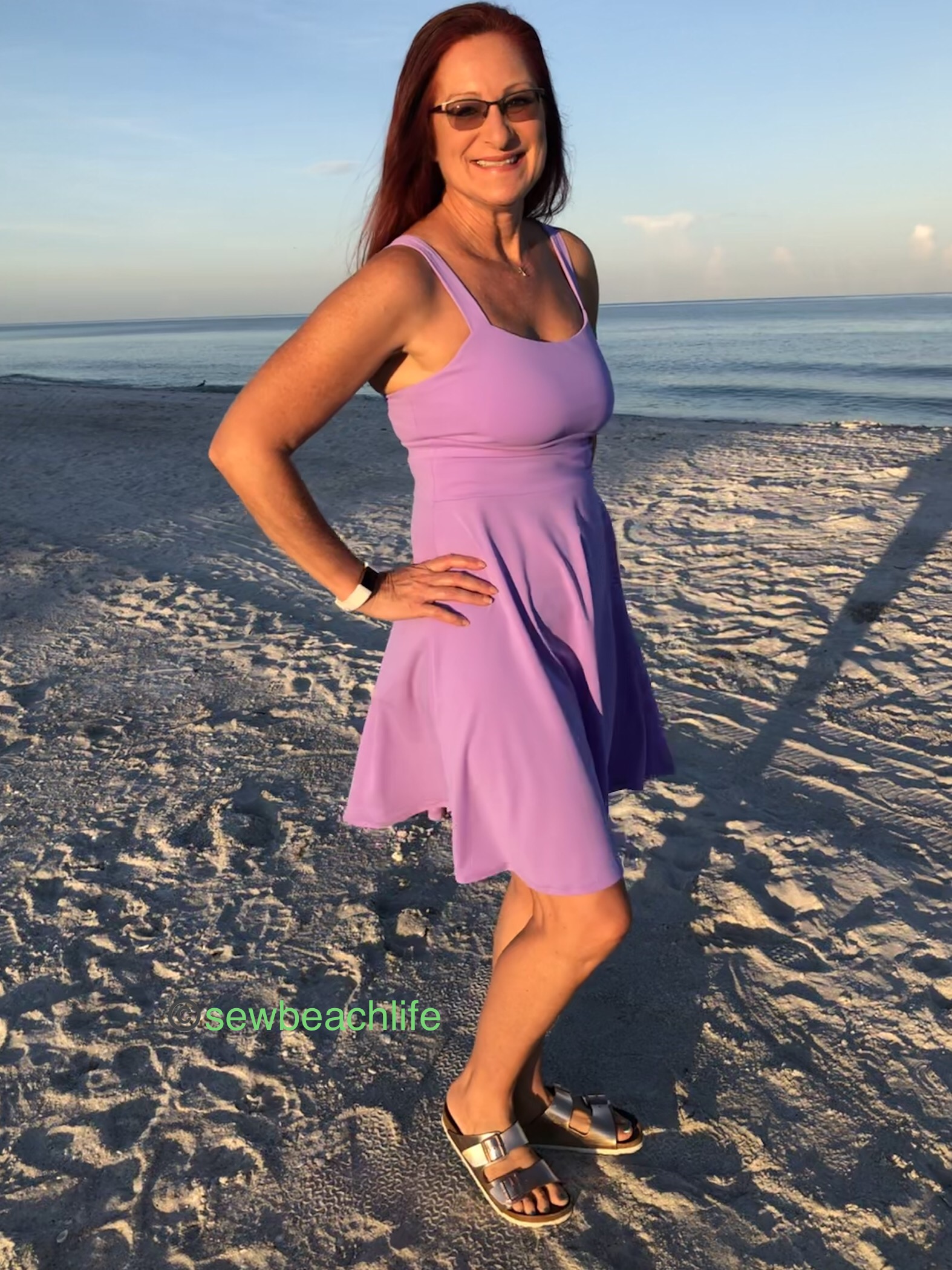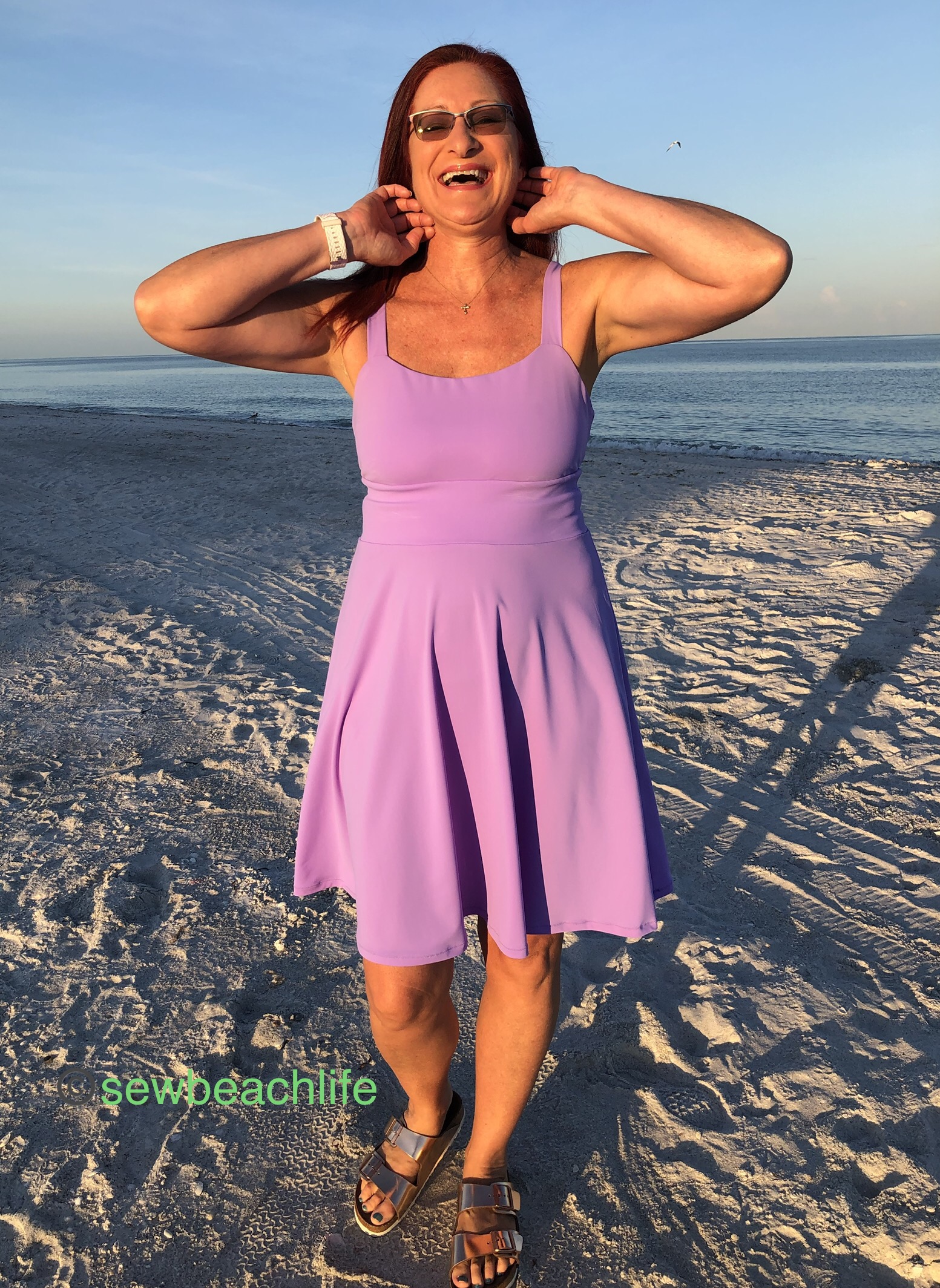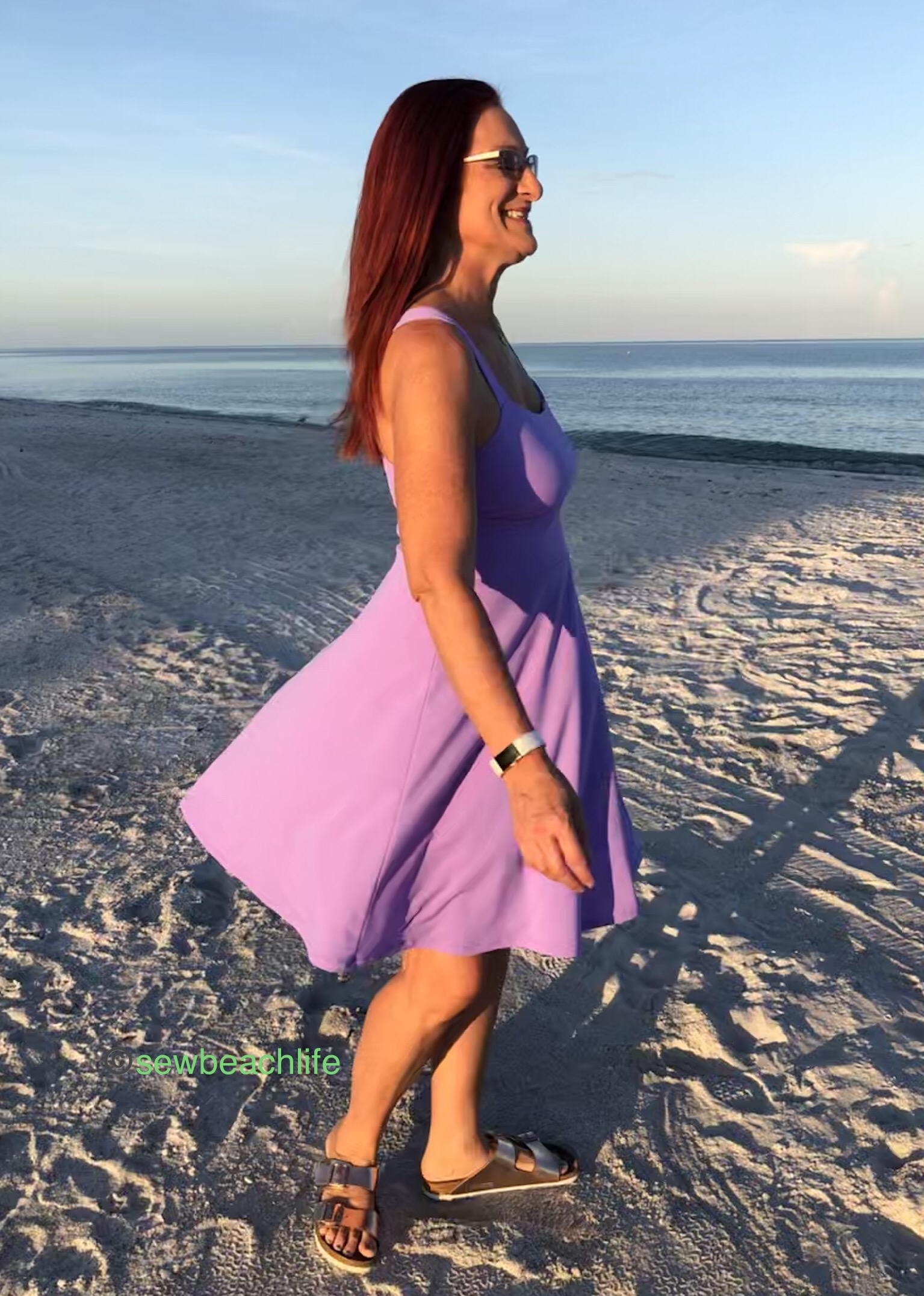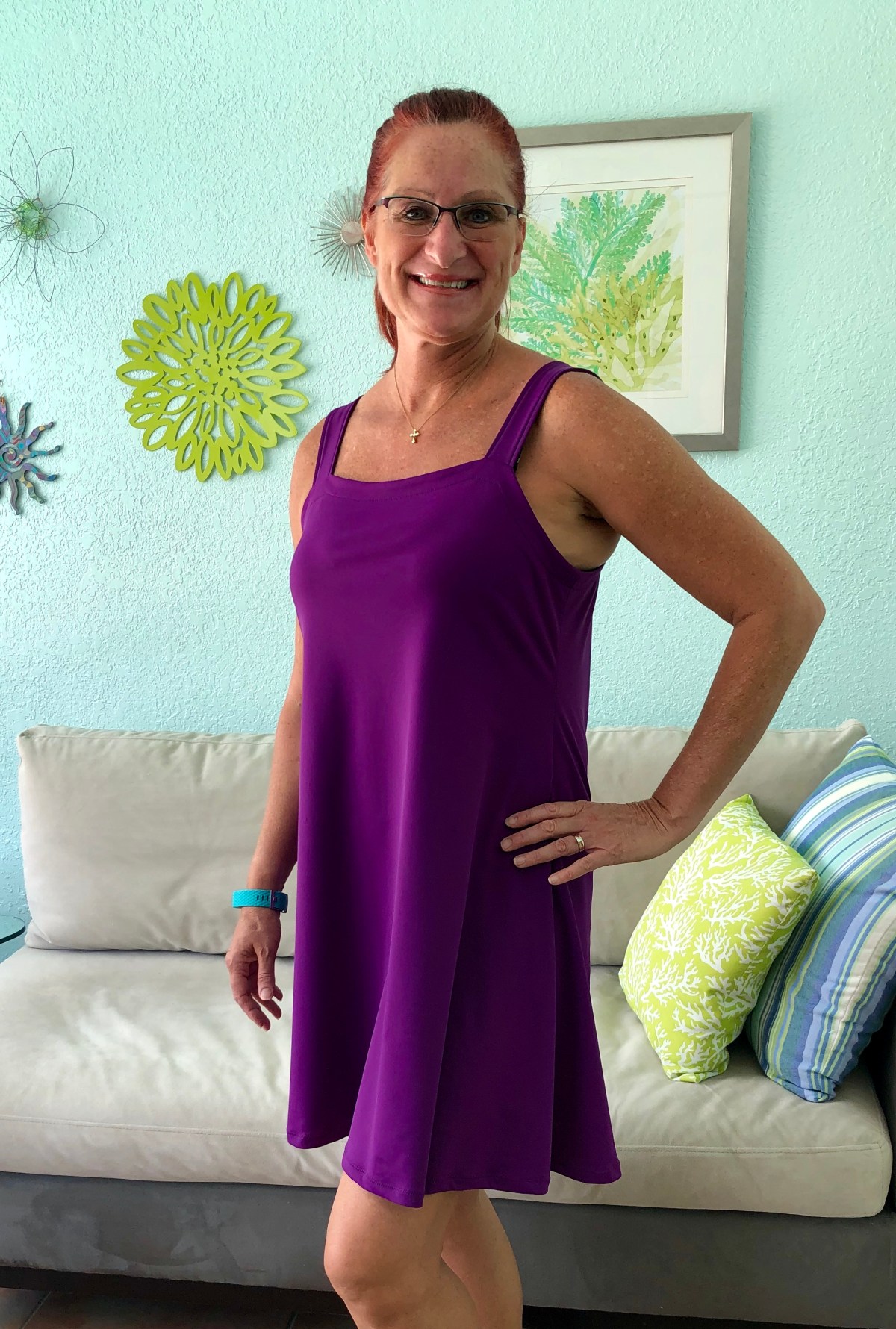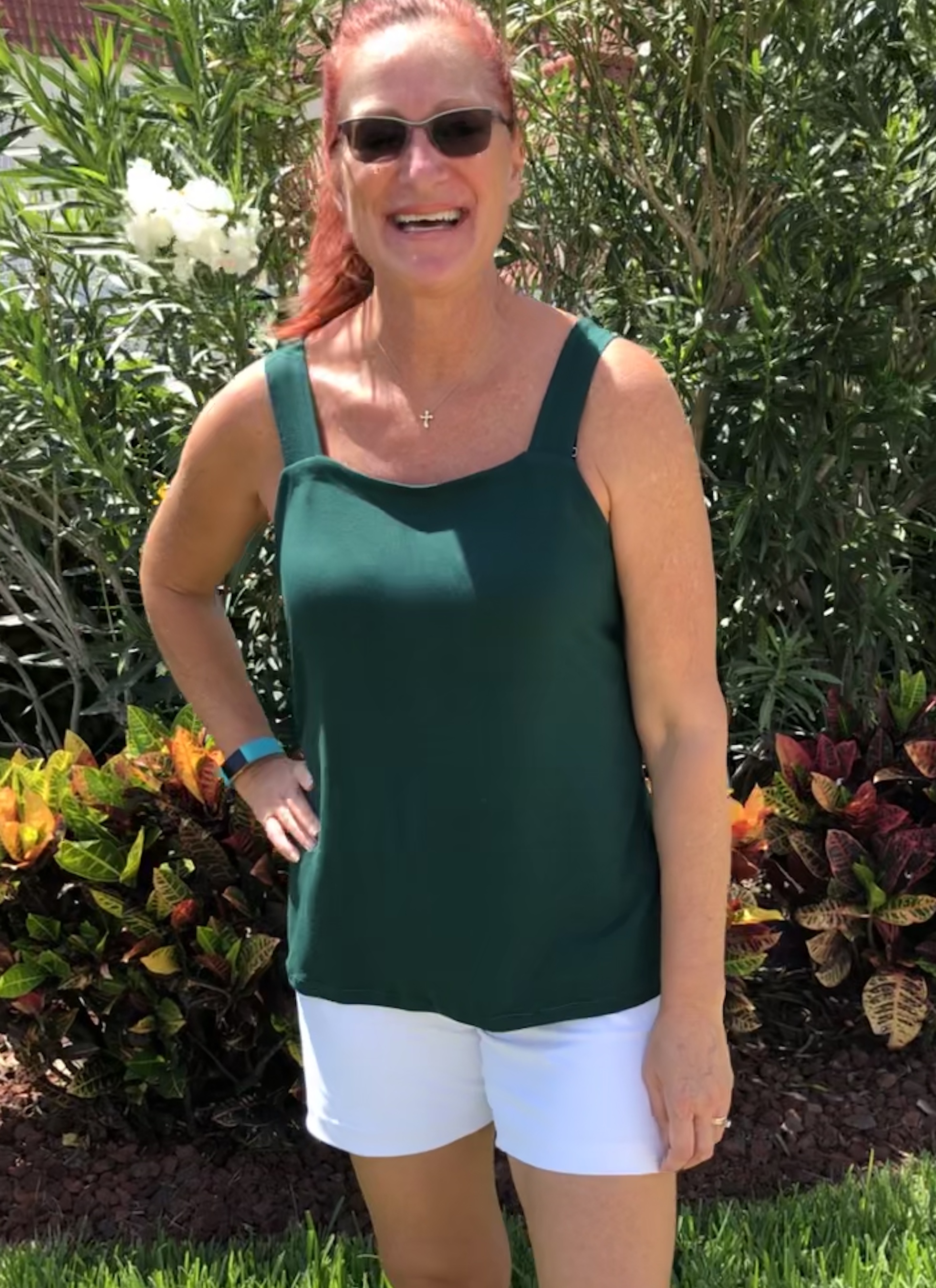Workout wear makes up a large portion of my wardrobe, so I like trying out new patterns and styles. Porcelynne is known for their bra making books and extensive bra making supplies. Their current warehouse is somewhat local to me, and that is how I stumbled across the Jackie pattern. Jennifer (the designer, author, and owner of Porcelynne) is in a Florida sewing group that I’m in on Facebook. She hosted a shopping event that included fabric from an estate sale at her warehouse. I chatted with her while shopping, and commented on the sports bra she was wearing, asking her which pattern it was. She told me it was a new pattern that would be releasing soon. Once the Jackie Sports Bra pattern dropped, I bought it, and the Tankini Add-On pattern.
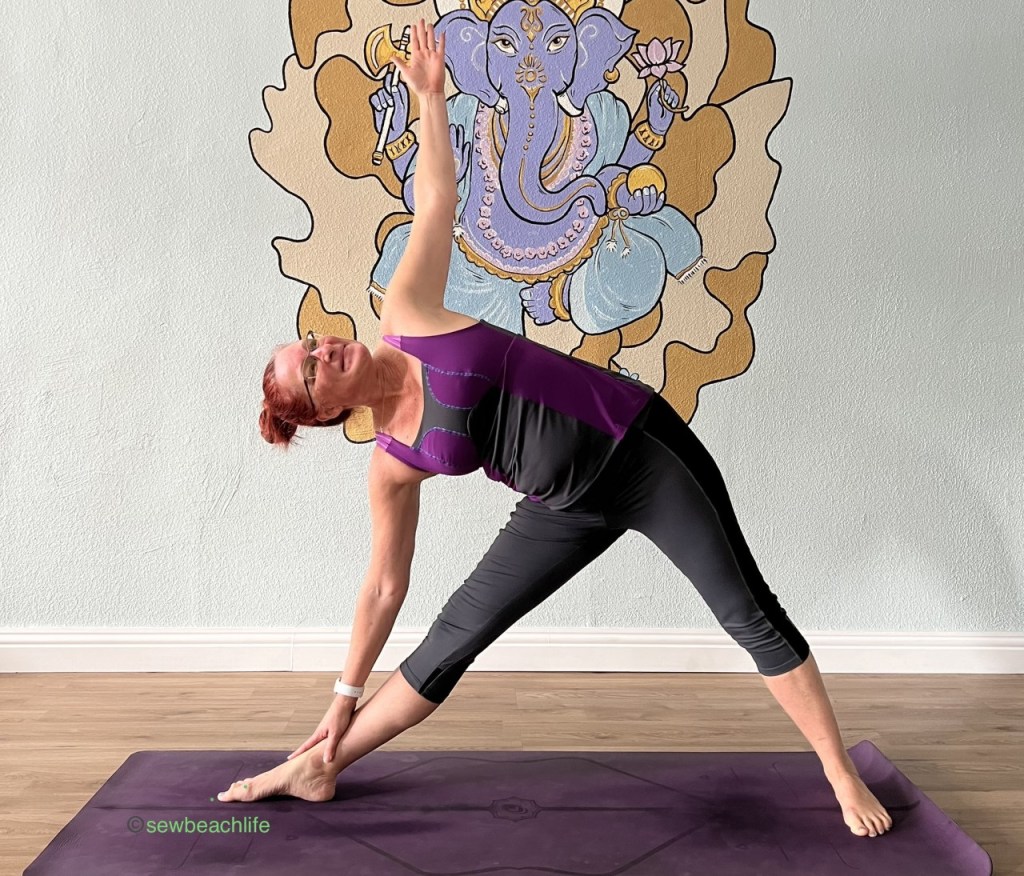
Since Christmas was right around the corner, I spent the next month sewing for others and put off sewing anything for myself. January rolled around, and with it, time to sew for myself. The Jackie is marked as a more advanced pattern, so, as suggested in the tutorial, I decided to make the “simple” pullover version, rather than the zip up front to ensure that I had chosen the correct size. The size chart is extensive and includes fitting tips for uneven breast sizes, compression fit, etc. Knowing that I planned to workout in my bra, including upside down poses in yoga class, I sized down one size for the band, and used powernet in the bra. I did not size down in the cups, because I know powernet has a strong rebound factor. Snug but not not tight is the name of the game in comfortable workout wear! This meant that instead of making the 34F that I measured, I went with the 32F.

The Tankini Add-On is based on your band size and has some cool overlapped pockets on the front side panels. Although I like the looks of the pocket panels, all of my workout tights have pockets, so pockets on my top were redundant. Skipping the pockets meant a little more work to figure out the length on the side panels, but it wasn’t really that challenging to mark a new cutting line. The curving lines on the front panels of the tankini are super cool, but the curves on the side seams are not designed for my body shape. The tankini side seams were too “hippy” on me, with bulges on the sides, then a bit snug at the bottom, which makes the bottom want to slide up to a narrower point on the body. Part of this is probably due to the shape of my booty, which I frequently adjust for when making tops or dresses. Have you ever had a top or dress hem be too short in the back (shorter in the back than the front)? Even on a flowy dress, so you know it’s not because it’s too tight in the hips? Yeah, it’s super annoying, but there is an easy solution as long as it’s done at the “tracing the pattern” stage.
Whenever I’m tracing off a top or dress pattern and the back hem is straight across from center back to side seam, I know it’s going to be a problem if I don’t make an adjustment. Booties protrude from your back, and you need adequate fabric to cover them. Obviously you need adequate hip width, so do any grading out to the appropriate size first. In case you haven’t read my previous posts on the importance of grading, I am a stickler about grading to fit your body. Designers make patterns to fit an average of measurements, and they provide size charts for a reason. Just because your bust measurement falls into size x, it doesn’t mean that your waist and hips do too. Maybe they fall into the measurement range for a size y or z. It’s worth taking the time to grade to your size(s). Now back to the booty issue. If you’ve noticed the “too short in the back” issue on your makes, you need to add length at the hemline in the center back of your pattern, curving up to meet the side seam. Adding 1.5″ at the center fold line seems to be the perfect amount for me.

Using a curved ruler can help you draw smooth even lines, but you can do this by eye. I do this adjustment on every fitted workout top I make. It’s helpful on more fitted tank and tee shirt patterns as well. Many flowy top patterns seem to include a curved hem. Occasionally after making a pattern with a slightly curved hem, I find that I need to add just a little bit more length to the curve at center back.

Although I generally followed the tutorial directions when sewing the bra (which is a good idea when trying a pattern for the first time!), I’ve made enough workout wear to feel comfortable making a few changes. Since I had used powernet on all of the front and back pieces, using elastic along the top seam wasn’t necessary. The caveats to this being: first and foremost, having chosen the proper size; using a high quality powernet (not a flimsy powermesh); and using the differential on my serger. When sewing knits, always up the differential (to 1.3 generally speaking) to keep the fabric from stretching out of shape while serging.
Since the neckline has a somewhat squared shape where the center front meets the side front, I found it helpful to sew with a stretch stitch first, then go back and serge to ensure nice crisp corners.

The bra pattern includes a normal rectangular band with 1-3/8″ wide elastic. The tutorial for the Tankini Add-On recommends serging narrow elastic into the seam when attaching the bra bodice to the tankini. I much prefer a nice solid 1″ wide elastic enclosed in a band on my workout tops. After all, I’m going to be upside down in headstands during yoga class and want a very secure band! On most tops the seam between the bra and bodice is relatively straight, but the Jackie bra has an interesting upward curve at center front. Rather than just using a simple rectangular band, I hacked mine to have a curve matching the curve on the center front of the tankini bodice.

Since I don’t like loose elastic floating around inside of a band, I always serge one long edge of the band into the seam when attaching the bra and bodice. Since I’m using 1″ wide elastic, my band is 2-1/4″ high (except for the top center, which is shaped to match the bodice). Here’s what works for me: have the bodice inside out; slide the bra down inside the bodice with the right side out (the bra and bodice will be RST); place the band (sewn into a loop) inside the bra, with the right side of the band facing the lining of the bra, matching all quarter points. Serge from the inside of the top, with the band on top. I like to use plenty of pins to ensure that all layers stay perfectly aligned. Just be sure to pull the pins before they get up to the blade so you don’t hit them! If you’re nervous about this, just baste the layers together, then go over to your serger.
Since different brands of elastic can be more or less stretchy than others, I like to pre-stretch my elastic 8 or 10 times, then wrap it around my body where the band will fall (just under the bust) and pull it to a snug, yet comfortable tightness with a 1/2″ overlap. (Using the 1″ elastic from Wawak, mine ends up 27-1/2″ long.) Overlap the ends 1/2″, and zig-zag together, securing the ends. Mark the quarter points on the elastic (I just use a pencil). Pin the elastic to the wrong side of the unfinished long edge of the band, matching the quarter points, and serge, stretching the elastic to match the band. Then fold the elastic up inside the band, overlapping, and just matching the top of the seam. Pin, then coverstitch in place. This will keep the smooth side of the band against your skin, with the seam on the side against the bodice.

The wrap-up: I like that the Jackie bra is unique, and different from other sports bra patterns. It’s rated as a more advanced pattern, and I’m glad that I have plenty of experience sewing workout wear. It would probably be intimidating to a beginner sewist, but Porcelynne has a pattern discussion and a sew-along group on Facebook, as I recently discovered. It can be helpful to have a group of people to refer to and ask questions of who are familiar with a pattern. When people ask questions in a pattern or sewing group, and I’m familiar with the pattern or problem, I always try to help. Share your experience to help others who are still learning. That’s how we learn and grow, by doing, and seeking help from those with more experience. And I want people to love sewing, not get frustrated with it and give up.

Rather than the padded adjustable straps the pattern calls for, I chose to add fixed double straps of 5/8″ wide plush bra elastic. If I were going to wear the bra as just a bra, those padded adjustable straps would probably be quite comfortable. I really should make a version with adjustable straps even if only to show off the pretty rainbow rings and sliders and plush bra elastic I bought from Porcelynne!

The details: the Porcelynne Jackie Sports Bra and Tankini Add-On patterns are available in .pdf format as well as paper patterns.
The charcoal gray supplex, powernet, and plum nylon spandex were purchased from Phee Fabrics. This particular purple is from my stash and no longer available, but there is a very pretty purple nylon spandex tricot on the site. It’s easier to sew when you use high quality fabric, and moisture-wicking nylon/spandex fabrics are your best bet for workout wear!
When reverse triple coverstitching, I used Superior Threads Fantastico #5154 High Society in the looper. I just love the sheen, and how prettily it accents my fabric. Their variegated threads are fabulous!

And thank you to my sweet husband for taking photos at home. Sadly it’s too cold and windy for outdoor photos right now!
Thank you for reading and sharing my love of creating, sewing, patterns, fabric, and making beautiful, well-fitting garments!
